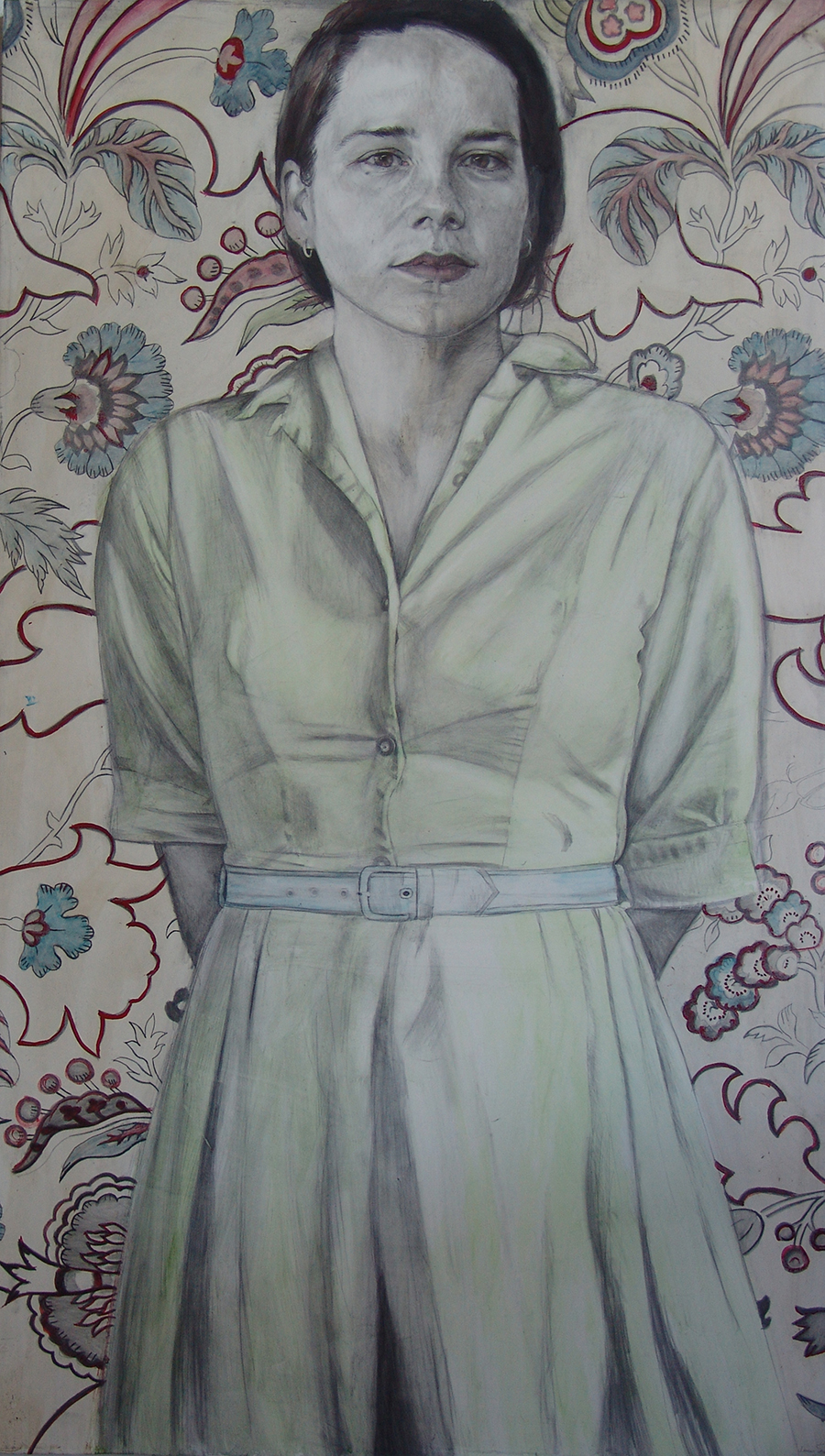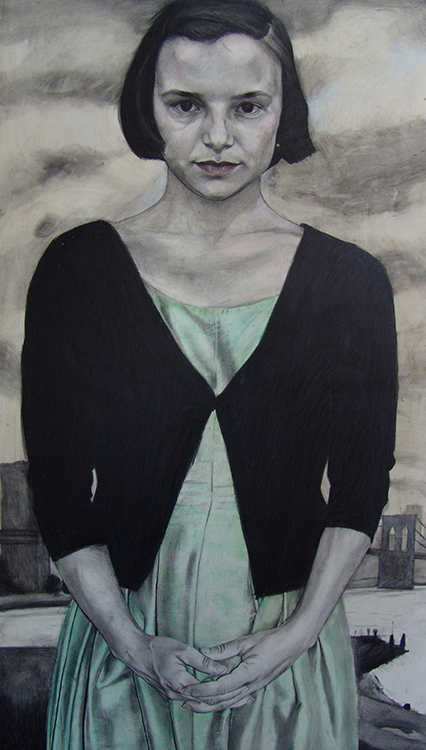Scobel, Jenny


Born 1955 in Orrville, USA, lives in New York
Jenny Scobel is a painter of unusual portraits. On wooden tablets with a layer of plaster and marble dust, she uses graffiti and oil paints to paint portraits of women, sometimes children as well. She finds ideas for her paintings in newspapers and magazines, and often uses photographs of her friends or finds inspiration in animated movies and art history books. Her portrayed subjects thus include entirely unknown, inconspicuous and trivial persons, as well as world-famous celebrities such as Jacqueline Kennedy or Hollywood star Michelle Pfeiffer. Mostly, they are depicted realistically and from the front, but against a background that doesn’t quite fit. They often have an absent expression; sometimes they look bashful, at other times, alluring. The fact that the paintings are based on photographs can be identified by the way in which Scobel works with light.
Jenny Scobel’s portraits are remarkable in that they cannot be placed within any particular time period. The portrayed people are for the most part from our era, but their clothing and even facial expressions and body language belong in the past. Scobel deliberately dresses her subjects in clothing from the 1930s and ’40s or in historical dress, and sometimes the women wear head covering like the kind we know from portraits by the 15th-century German painter Hans Holbein. However, the most striking feature of Scobel’s subjects is how gaunt and exhausted they appear. They have a stern, almost Calvinistically ascetic look to them. This is how the American painter Grant Wood depicted his contemporaries during the Great Depression in the 1930s. His famous American Gothic (1930) shows a careworn, emaciated, prematurely aged and stern-looking farm couple with a pitchfork. Scobel has adopted this form of depiction, in which the subjects seem to step out of the picture and leave their world (in American Gothic, the farm in the background) behind.
Although the portrayed individuals take up most of the painting, Scobel pays great attention to the background, which generally is quite unusual: antique wallpaper with floral patterns or landscapes painted from above in the style of 15th-century Italian painting. Despite all their naiveté, all this gives Scobel’s portraits a touch of the morbid, a feeling that is further accentuated by the layer of wax that she uses to seal the finished paintings.
